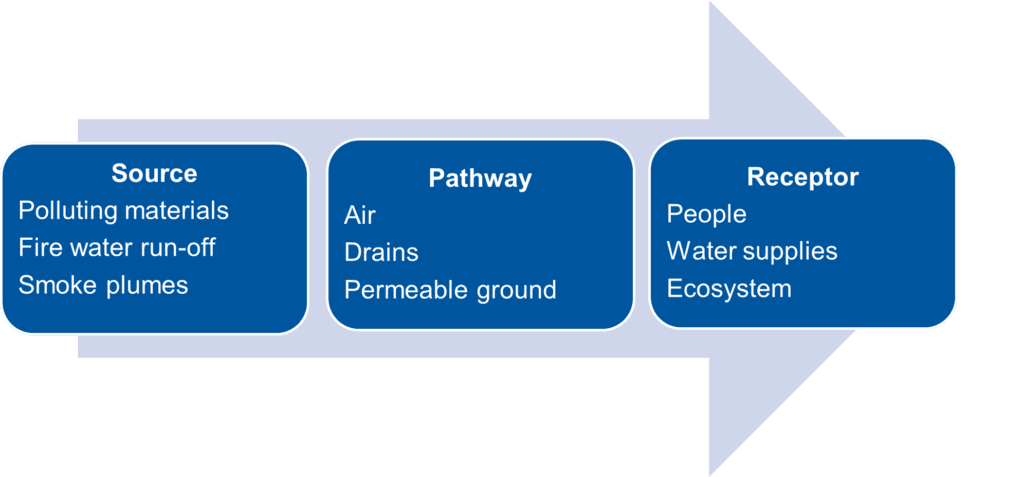Risk assessment at an incident: Environmental risks
Control Measure Knowledge
This control measure should be read in conjunction with Risk assessment at an incident
In normal circumstances there is no defence against a breach of environmental protection legislation or regulations. However, a risk assessment must prioritise human health, and for this reason exemptions are provided. For more information refer to Foundation for environmental protection – Legal defences: pollution.
Environmental risk assessments should identify and consider all routes that may allow polluting materials to impact the environment. A national environmental risk assessment template has been prepared to help personnel to complete an environmental risk assessment. There are two approaches available to carry out the assessment based on the scale of the incident:
- For smaller incidents, the environmental risk assessment may be included as part of a dynamic risk assessment and recorded following service protocols
- For larger, more protracted incidents or if a known risk to the environment has been identified, a formal environmental analytical risk assessment should be completed and recorded
After completing the appropriate assessment, any identified or suspected risk to the environment should be communicated to the fire control room, those attending the incident, and other organisations if appropriate. For more information refer to Foundation for environmental protection – Operational environmental risk assessments.
Throughout and after the incident, there should be monitoring and reviews of the environmental impact of fire and rescue service activity.
Source, pathway, receptor model
Applying a source, pathway, receptor model may help to control and reduce the risks of pollution. The first action is to identify the source of hazards to the environment. When a hazard is identified, measures should be taken to prevent or reduce the risk of pollutants reaching vulnerable receptors in the environment via a pathway.

